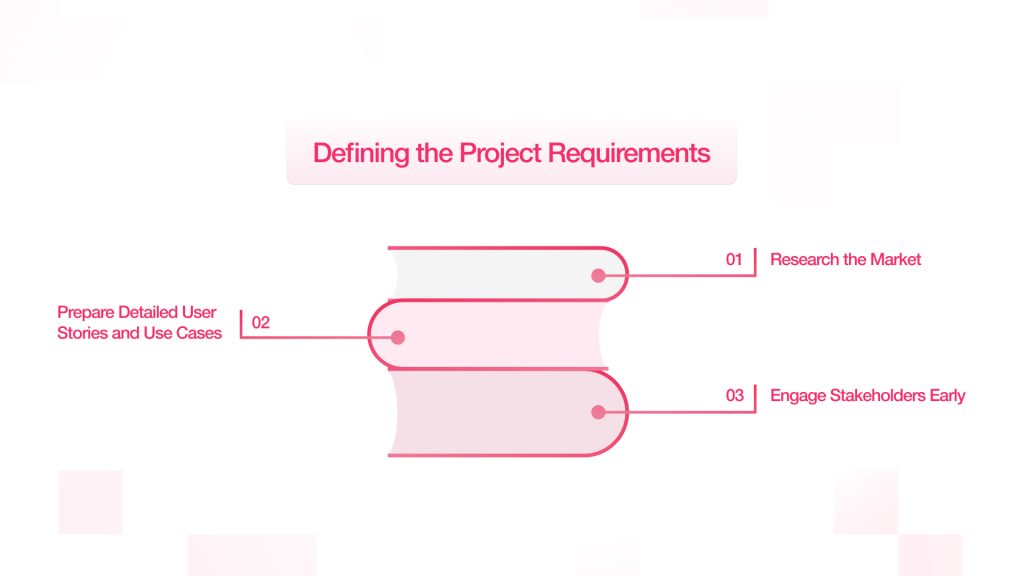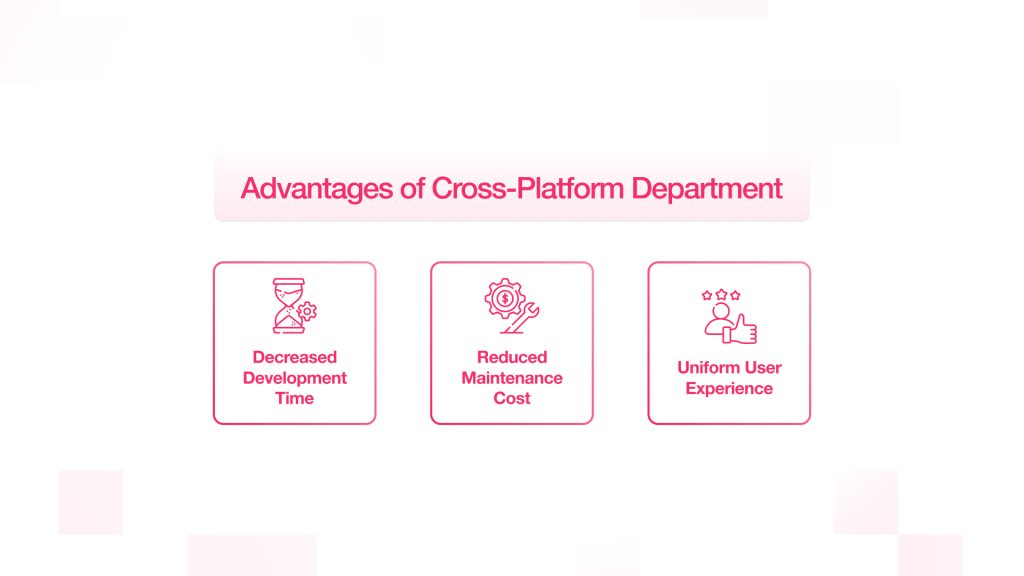How to Reduce Mobile App Development Costs Without Compromising Quality

Creating a mobile application is a significant investment; proper planning and actualization are needed. Strategic approaches would allow any business to save on mobile app development cost while still highly maintaining the quality standards. This blog discusses various course of action that will enable one to actually save costs without compromising the integrity of the application.
Clearly Define Project Requirement
The basic requirement of controlling the application development costs is the establishment of an explicit and detailed project scope. Requirements that are unclear or changing give rise to scope changes and, hence, expenditure increases and project delays.

Recommended Action:
Research the Market: All these features have to rest on the understanding of your target audience’s needs and preferences.
Prepare Detailed User Stories and Use Cases: Specify the workings and interactions of the application.
Engage Stakeholders Early: Input from all relevant parties will help validate and prioritize feature selection according to business objectives.
Develop a Minimum Viable Product
It allows the businesses in leveraging the MVP to release the simplest version of the app, containing only the highly important and basic features. The team collects early feedback from users after releasing the MVP, which helps mitigate the risks of investing in unproven features.
Benefits of MVP:
- Cost Efficient: Reduces initial development costs by concentrating on essential functionalities.
- Market Validation: Validate concept through real-life testing of the notion behind the app to derive insight.
- Incrementally Improving: Provides feedback for future improvements to the app when versions are released.
Utilize Cross-Platform Development
Creating individual apps for both iOS and Android prove to be a costly venture. With cross-platform development frameworks, there’s one code that works across many platforms, leading to huge savings in time and cost.

Advantage
- Decreased Development Time: Write once for dual deployment on iOS and Android.
- Reduced Maintenance Cost: Maintain one code base, making updates and maintenance simple.
- Uniform User Experience: Ensure a common experience across the platforms, satisfying the user.
Popular Cross Platform Tools
- React Native: A mobile application development framework built by Facebook which allows developers to build applications on iOS and Android in JavaScript and with React.
- Flutter: Google’s framework for building natively compiled applications from a single codebase for mobile platforms, web, and desktop.
- Xamarin: The Microsoft-controlled framework that uses C# and .NET for developing applications for multiple platforms.
Use Open Source Resouces
Using open-source libraries and frameworks could reduce reasonable development time and cost in a substantial way. Pre-built components and functionalities allow developers to focus on the uniqueness of the app.
Benefits:
- Fast development: Leverage already existing solutions to fasten the speed of development.
- Cost effective: Remove the need for the usual development of common features from scratch.
- Community Support: Collaborate with a community of developers for support and continuous improvements.
Considerations
- Licensing: Open-source licensing compliance.
- Security: Frequent updates and monitoring for open-source components for vulnerabilities.
Outsource Development Tasks
Outsourcing particular development responsibilities to specialised agencies or freelancers could allow savings in costs. This approach provides access to a global talent pool without the overhead of maintaining a full-time in-house team.
Benefits
- Access to Expertise: Be able to hire a team of professionals actually having specialised skills tailored toward the needs of the project.
- Scalability: Adjust team size according to project requirements and budget constraints.
- Cost Reduction: Enjoy preferential labour rates in different regions.
Best Practices
- Define Clear Deliverables: Clear expectations and milestones are set for the project.
- Keep in Touch Often: Stay on the same page and address issues as they arise.
- Expert Evaluation: Review portfolios and interview to test proficiency.
Looking for a Partner in Your Mobile App Development Journey?
We Can Help!
Focus on Core Functionalities and Avoid Scope Creep
A clear definition of the app’s core features and a commitment to maintaining them can prevent scope creep, which is the addition of extra features during development that increases costs and delays.
Strategies
- Prioritize Features: Determine the functionalities that must be maintained for the business objectives and needs of the users.
- Set Realistic Milestones: Divide the project into phases that can be completed with workable objectives to review the progress.
- Manage Stakeholder Expectations: Administration of all important communications to understand and agree to the conditions of the project.
Implementing Continuous Integration and Deploy
CI/CD practice adoption helps in the automation of integration as well as deployment processes resulting in faster development cycles with minimal manual intervention. This means reduced errors, better code quality, faster time-to-market, and overall lower costs.
Benefits
- Early Bug Detection: Continuous testing identifies issues promptly, reducing debugging costs.
- Faster Releases: Automated deployment streamlines the release process, allowing for quicker updates.
- Improved Collaboration: Developers, testers, and operations teams work cohesively, enhancing productivity.
Optimize App Architecture from Start
Smart architectural choices made at the beginning of the project could help avoid costly rework. A carefully structured applications framework will guarantee scalability, maintainability, and ease of adaptation to accommodate changes of future technologies or third-party services.
Key Considerations
- Use Modular Architecture: Creating the app in loosely coupled modules will make management, testing, and independent feature updates easier.
- Scalability Considerations: Even if the initial release is rudimentary, the design of the backend should be structured to accommodate growth in user numbers and data in the future.
- Selection of Appropriate Technology Stack: Choose well-supported and proven technologies that fit the complexity and budget considerations of the project.
Conduct Regular Code Reviews and Quality Assurance
If the detection of bug or code is poorly written is done at early stage, it can save time and money. Therefore, frequent code reviews ensure that the code is clean, efficient, and thus reduces maintenance costs after the product launches when combined with a good quality assurance process.
Implementation Tips:
- Automated Testing: Make use of tools such as Jest, Espresso, and XCTest to run unit, integration, and regression tests automatically.
- Peer Code Reviews: Members of the development team should be encouraged to review each other’s code to identify faults early.
- Dedicated QA Team: Having a separate testing team helps to maintain objectivity and apply strict standards.
Avoid Overengineering
While developing a new system, it feels really attractive to add additional features or to take into account every possible use case at the very beginning of the process. Unfortunately, needless features inflate budgets and cause delays in launching.
Best Practices
- Stick with the Scope: Avoid the temptation to develop anything does not core to your value proposition.
- Follow KISS (Keep It Simple, Stupid): Make it simple, but stupid: Going with the simplest solution that is adequate to your initial needs and making additions in the future.
- Feature Validation with Data: Don’t spend any development resources on features without evidence from users or market research.
Monitor and Optimize Post-Launch Performance
Mobile app development costs continue after deployment. Continuous monitoring, optimization, and updates are key components that help ensure the performance is smooth and users are happy.
Post-Development Cost-Control Strategies:
- Analytics Tools Use: Using platforms such as Firebase, Mixpanel, or Amplitude enables monitoring of user behaviour and friction point identification.
- Crash Reporting: Using tools like Sentry or Crashlytics alerts the developer to bugs and crashes in real-time.
- Performance Monitoring: Tracking load time, memory consumption, and battery usage for ongoing performance improvement and avoiding expensive overhauls down the track.
Selecting the Right Development Partner
A suitable partner may maximize or ruin the budget and quality of your application. It is important to have a team that understands your business goals, preferably an established one whether outsourced or co-located.
Evaluation Criteria
- Relevant Experience: Choose teams that have built applications similar to yours in functionality or industry.
- Transparency: Any surprising development or delay in project progress is mitigated by regular project status updates and reporting.
- Project Management Tools: Using project management tools such as Jira, Trello, or Asana will add further value to the transparency about the progress and allocation of resources.
Need a Reliable Mobile Development partner to help grow your Business?
Looking for more? We Can Help!
Focus on User-Centric Design
Investing in a thoughtful UI/UX design from the beginning would avoid costly remodelling due to poor user engagement or confusing interfaces. Fewer support issues, abandonment rates, and higher retention, which usually have financial implications, are all benefits associated with a clean, intuitive design.
Money-Saving Design Tips
- Wireframe and Prototype: Figma and Adobe XD are tools that can help visualize flows that should be coded later.
- Usability Testing: Test small user groups to find and fix early problems with the designs.
- Keep Design Continuous: A consistent design system cuts down time spent developing and testing UI components.
Use Backend-as-a-Service
For applications not requiring complex backend infrastructure, support of Backend-as-a-Service like Firebase, Supabase, or AWS Amplify can go a long way toward reducing upfront and operational costs.

Advantages of BaaS
- Pre-Built Infrastructure: You completely bypass the effort to build authentication, databases, and file storage by yourself.
- Scale: Thousands of users with no thought directed towards the underlying server maintenance.
- Security: Compliance with major security standards and practices comes prepackaged with these platforms.
Want to keep your business data secure? Here are some tips to keep your data secure.
Conclusion
To reduce the cost of developing a mobile app without sacrificing quality or performance, one must make proper decisions and choices during the entire lifecycle of the product-from the planning stage to development and deployment and the final steps of application maintenance.
By focusing on:
- Clear and validated requirements
- Smart use of frameworks and open-source tools
- Cross-platform development
- Consistent quality assurance and CI/CD pipeline
- Outsourcing and modular development
- Post-launch monitoring
You can create a high-quality app
Cost-effectiveness involves no shortcuts. It starts with the information stage of planning, continues through development and implementation with a view toward practicalities, and is evaluated afterward. Cost management in mobile application development retains some measure of order and discipline and employs suitable tools throughout the entire process.
 Shopify
Shopify

















